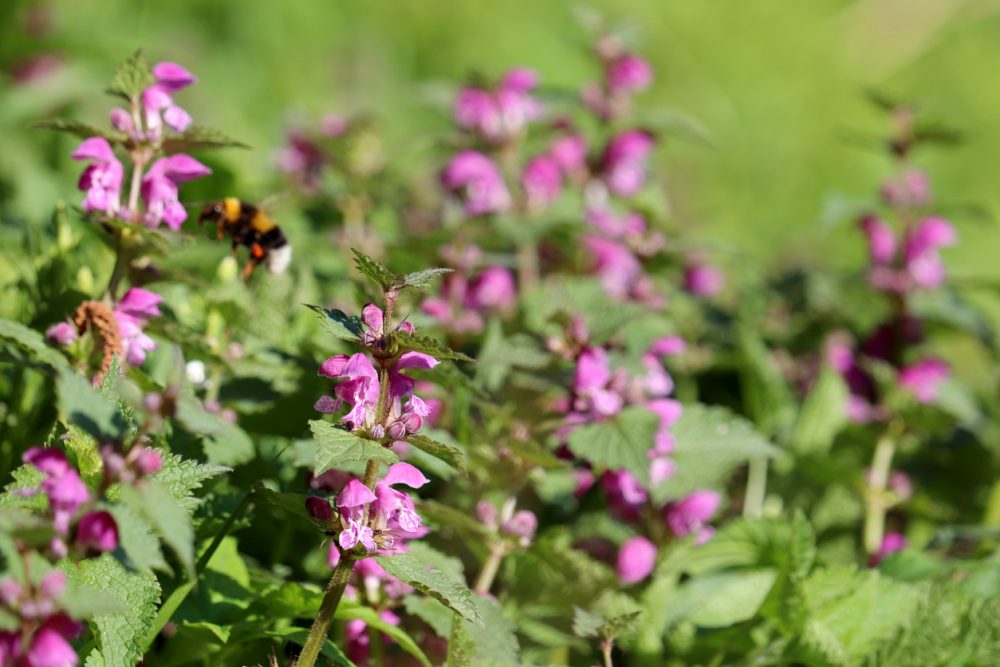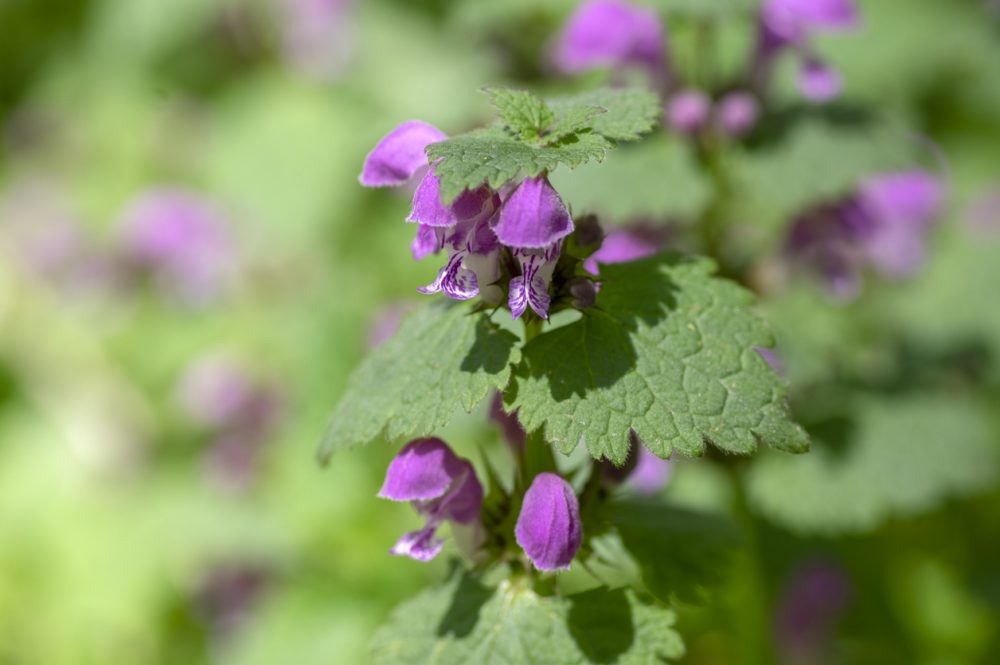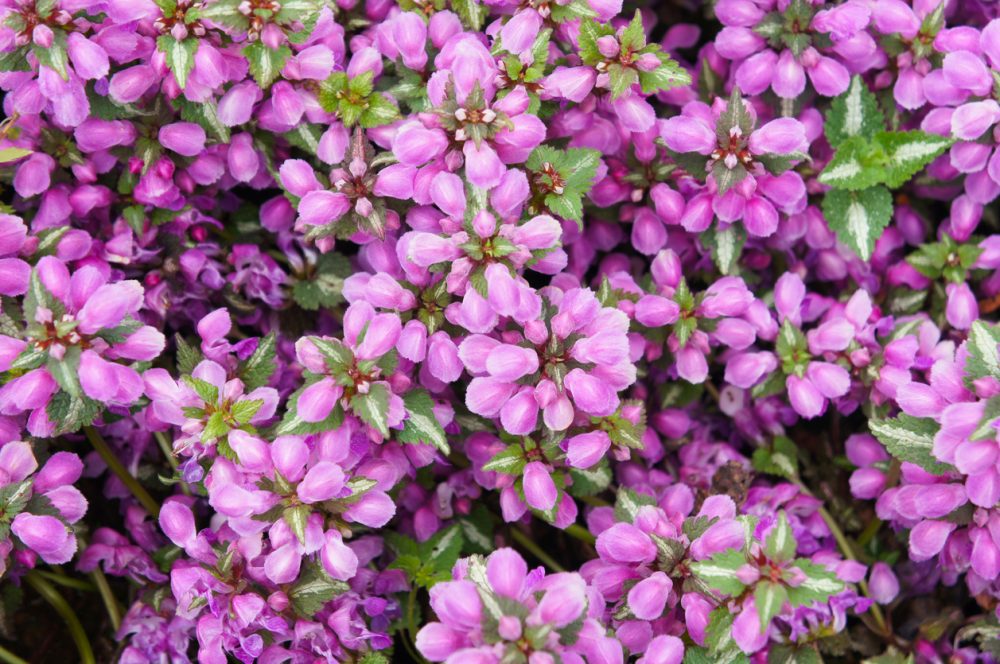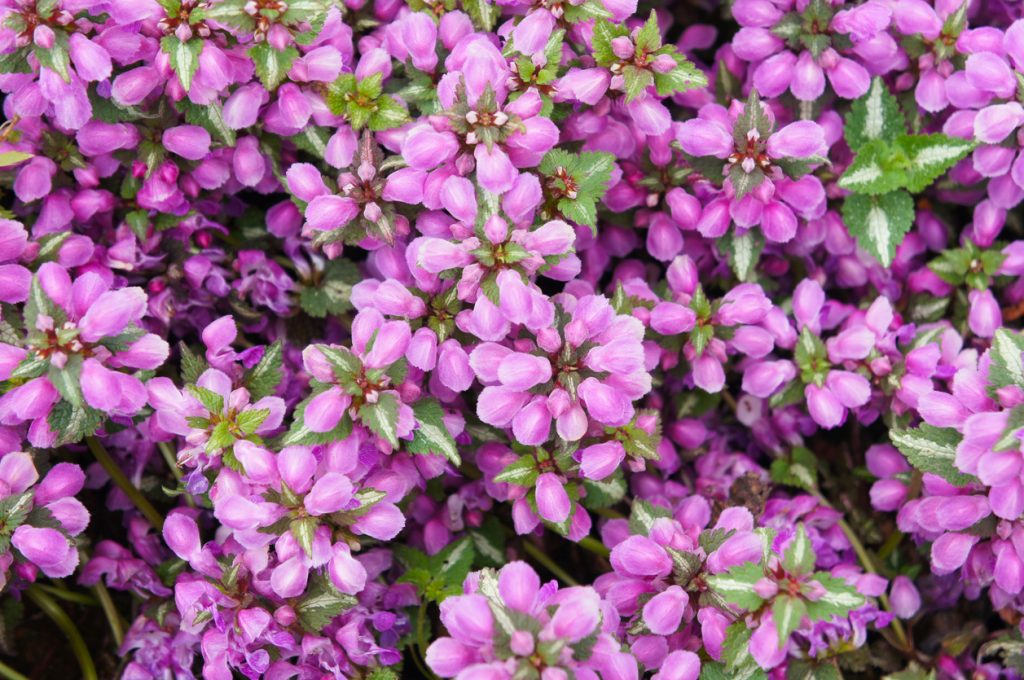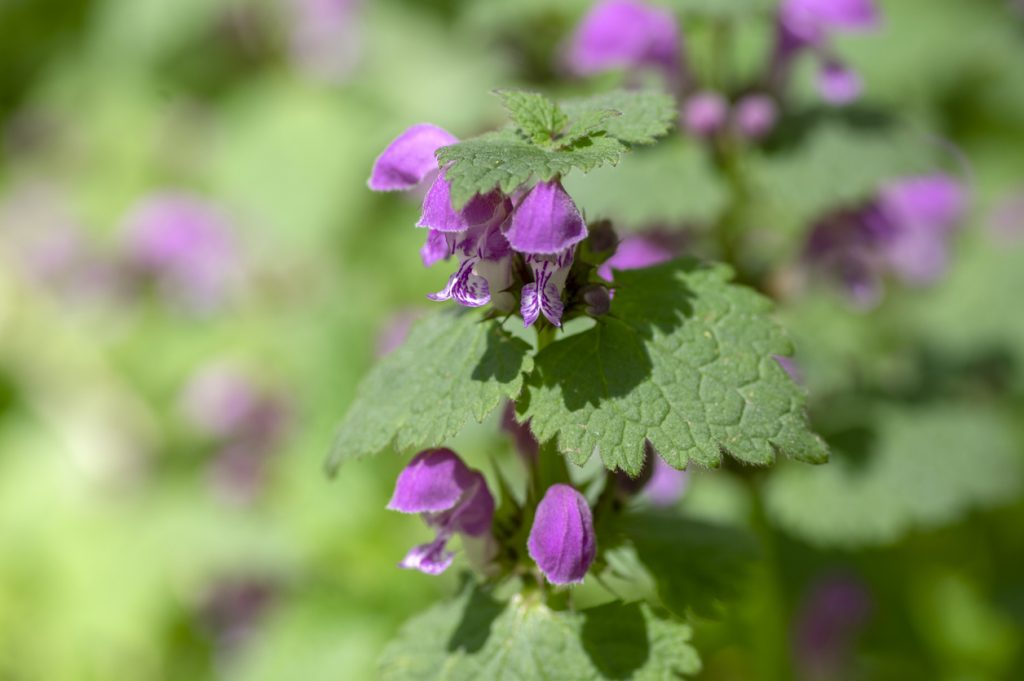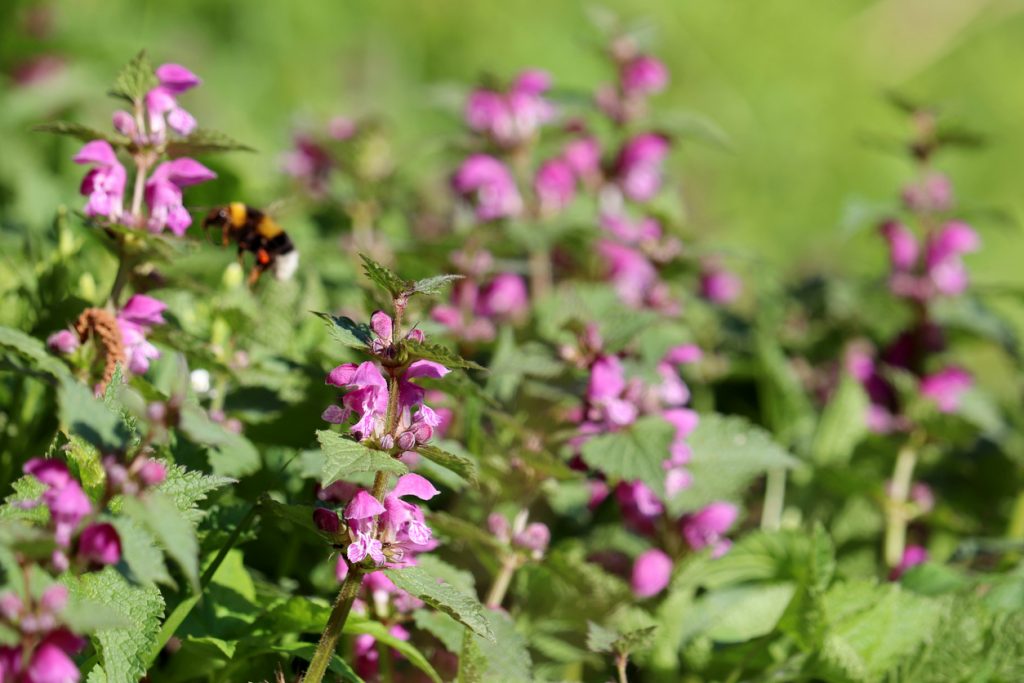Purple Deadnettle – Identify, Use, And Control Deadnettle Weeds In Your Garden
If not all weeds are invasive plants, then purple deadnettle deserves a place in your garden as much as on your kitchen table. That’s not saying that deadnettle weeds do not tend to grow out of control at times. But just because they have a lusty and vigorous growth rate doesn’t mean you should treat them the way you would treat other weeds, with a hoe in one hand and a herbicide can in the other.
Truth be told, the purple deadnettle has plenty of benefits that outweigh its potential harm. And the harm we’re talking about here has to do with the plant’s fierce competitiveness that makes growing a veggie patch in the vicinity almost unthinkable.
So is purple deadnettle a weed or not a weed? Should you nurture it or get rid of it? The answers to these questions are not as simple and clear-cut as is the case with other weeds. So read on to find out more about this useful plant. Maybe when you know the different ways you can use this versatile plant, you might change your mind about it and decide to keep it in your garden.
Purple Deadnettle at a Glance
Purple, voracious, and hardy, the purple deadnettle (Lamium purpureum) was dubbed by the Greek as the gobbling purple monster. It’s an apt name for a plant that spreads across miles of plowed fields like fire in a hayfield. As a member of the mint family, this plant has a distinguishing square stalk and leaves, which are as good as dead.
Not exactly a large plant, the purple deadnettle averages about one foot tall and about 7 inches wide. The leaves of the plant are either purple or red and gather around the base of the stalk. Many of the leaves are actually dead, but they stay on the stem.
A native of Europe, the plant made its way to the USA and Canada only relatively recently. It grows well on roadsides and vacant lots as much as in gardens and fields. The hardy plant is not particular about the soil conditions, fluctuating temperatures, and lack of rainfall. It continues to grow and claim new territories as long as there’s the occasional rainfall.
In April, small flowers start to bloom and last for about 6 weeks. The red flowers are usually tubular in shape, with petals curving toward each other. The flowers are a favorite stop for bees and other pollinators.
Purple Deadnettle vs. Henbit
People often confuse purple deadnettle with another similar plant called henbit. They both belong to the same family and grow more or less up to the same one-foot height. As winter annuals, it’s easy to see why you could mix one with the other.
But that’s not all the similarities between them. The seeds of both purple deadnettle and henbit start germinating in the fall and winter, and once the weather gets a little warmer, they sprout. That gives them an advantage over turfgrass which is still dormant until the real spring sets in. This explains why having either of those weeds in your yard can spell trouble for your turfgrass. However, by the late spring or early summer, the flowers would have been pollinated, and after the seeds had spread out, the plants would die until the next spring.
But there are subtle differences between those two species that you should know about. First, the flowers of both plants are quite distinct from each other. Henbit flowers are tubular in shape and dark pink in color. They grow in clusters, and the petals have pink spots around the edges. As for the leaves, they are round and small.
Purple deadnettle, on the other hand, has larger flowers than henbit flowers, and they are light purple in color. The leaves too, are purple, but they have a triangle shape, unlike the round henbit leaves. Based on the leaf shape and color of the flowers, you can easily identify both plants.
Benefits of Purple Deadnettle
Long before purple deadnettle encroached on lawns and gardens, earning it the unflattering moniker “invasive weed,” the plant has been used as food, medicine, and as part of other industries as well. Here are the main benefits of this versatile plant.
- Food: Not only is purple deadnettle edible, but it’s also considered one of the most nutritious superfoods that grow in the wild. But only the purple leaves are edible. The rest of the stalks and flowers are neither edible nor palatable. The tips of the leaves have a sweet aftertaste. You can use them to garnish your salad or to add flavor to your pesto recipes. They also serve as an indispensable ingredient in soups, teas, and smoothies.
- Medicine: You won’t expect your doctor to prescribe purple deadnettle leaves or recommend that you boil their roots and drink that concoction. But back in the day, the apothecary would prescribe to heal different health conditions. The plant is well respected for its antifungal, purgative, astringent, anti-inflammatory, diuretic, anti-bacterial, and diaphoretic qualities. Not only that, but much like vaseline, the leaves of the plant heal cuts and wounds. Some people use it as a tincture to cure allergies and cleanse the kidneys.
- Livestock: The plant is also a good food source for chicken, and bees seem to favor the pollen and nectar the flowers of purple deadnettle produce.
- Dye: Purple dye can be extracted from purple deadnettle and used to dye wool and linen.
Different Uses of Purple Deadnettle
But you don’t have to be an apothecary or even a skilled survivalist in order to use purple deadnettle. The plant is quite versatile, and you can use it in more ways than you can imagine. Here are some ways to make the most out of the humble and ubiquitous deadnettle.
Tincture
Although you can always make tea out of the purple leaves of deadnettle, a tincture is often more potent against allergies. To make your tincture, mix about a half cup of high-proof vodka with a quarter cup of deadnettle leaves in a jar. Mix them well, then place them in the fridge. After three weeks, the tincture is ready. Strain the liquid and get rid of the leaves. Whenever you have allergies, mix a teaspoon of the tincture with two tablespoons of raw honey. It also helps against inflammation. Don’t ingest the tincture if you have medical conditions or are pregnant.
Poultice
We all get the occasional cut or wound from time to time. While you can always use ointment and iodine, a poultice made from the leaves of purple deadnettle is often more potent. For one thing, the leaves are a natural cure. They also have faster healing results. And when you’re out hiking or enjoying nature, a nasty insect wound won’t wait for you to get home. So just gather a few deadnettle leaves, chew on them for a while to break down the outer coating and release the sap, then apply them on the insect bite or wound.
Infused Oil
Say what you like about infused oil, but the truth is there’s nothing like it as a basis for salves, lotions, concoctions, and balms. So how would you go about making infused oil from the deadnettle? You will start with your preferred oil. I always use olive oil since it is a healthy option. Put the dried leaves in a jar and add the olive oil at a ratio of 2:1 in favor of the oil. Place the jar in a pot filled to the third with water. Heat the water without getting it to boil for about three hours. Take the jar out of the hot pot and keep it in a dry cabinet. You can strain the infused oil out of it whenever you need it.
Cough Drops
If you have experience creating your own homemade concoctions to treat different illnesses, you’ll appreciate the healing power of the deadnettle. To create cough drops, you’ll need honey, herbal tea, mint extract, and the tincture we described earlier. Keep in mind that the resulting mixture can be both too strong and potent. So use a few drops at a time. It’s not suitable for children, pregnant women, or people with preexisting health conditions. The vodka in the tincture can make you drowsy as well, so you use our judgment about the dosage and the best times to take it.
How to Control Purple Deadnettle
Unfortunately, not everyone is a fan of the purple deadnettle. And one cannot blame them. The plant has an aggressive nature, and thanks to its high tolerance to cold temperatures, it can start growing long before your turfgrass or other plants in the garden. So how would you control a plant with these growing superpowers? Here are a few ways to go about it.
Cultural Method
Since it tends to grow well in disturbed soil, you should avoid tilling the soil during the fall or winter. That will prevent the seeds from finding fertile ground and lay waiting for the temperature to rise. If you have a lawn that needs mowing in the fall or winter, you should use high mowing to avoid disturbing the soil. If you come across any deadnettle plants, pull them out by the roots and dispose of them safely.
Biological Method
You can always use organic herbicides to fight off the spread of deadnettle plants. The most ideal candidates are clove oil, acetic acid, medium-length fatty acids, and pelargonic acid. For best results, use products that have a 5 percent concentration of the acids and above. The problem with these herbicides is that they could harm any plants you have in the vicinity. So be careful when applying them and try to limit them to the spot where the deadnettle plants grow.
Chemical Method
Another way to deal with these invasive weeds is to apply either pre-emergent or post-emergent herbicides. Post-emergent herbicides kill the growing plants, while pre-emergent products prevent the seeds from germinating in the first place. Products with active ingredients such as fluroxypyr, 2,4-D, and dicamba are ideal for controlling the weeds after they have started growing. You won’t need to apply any post-emergent herbicides in the summer since the deadnettle dies naturally under excessive heat.
